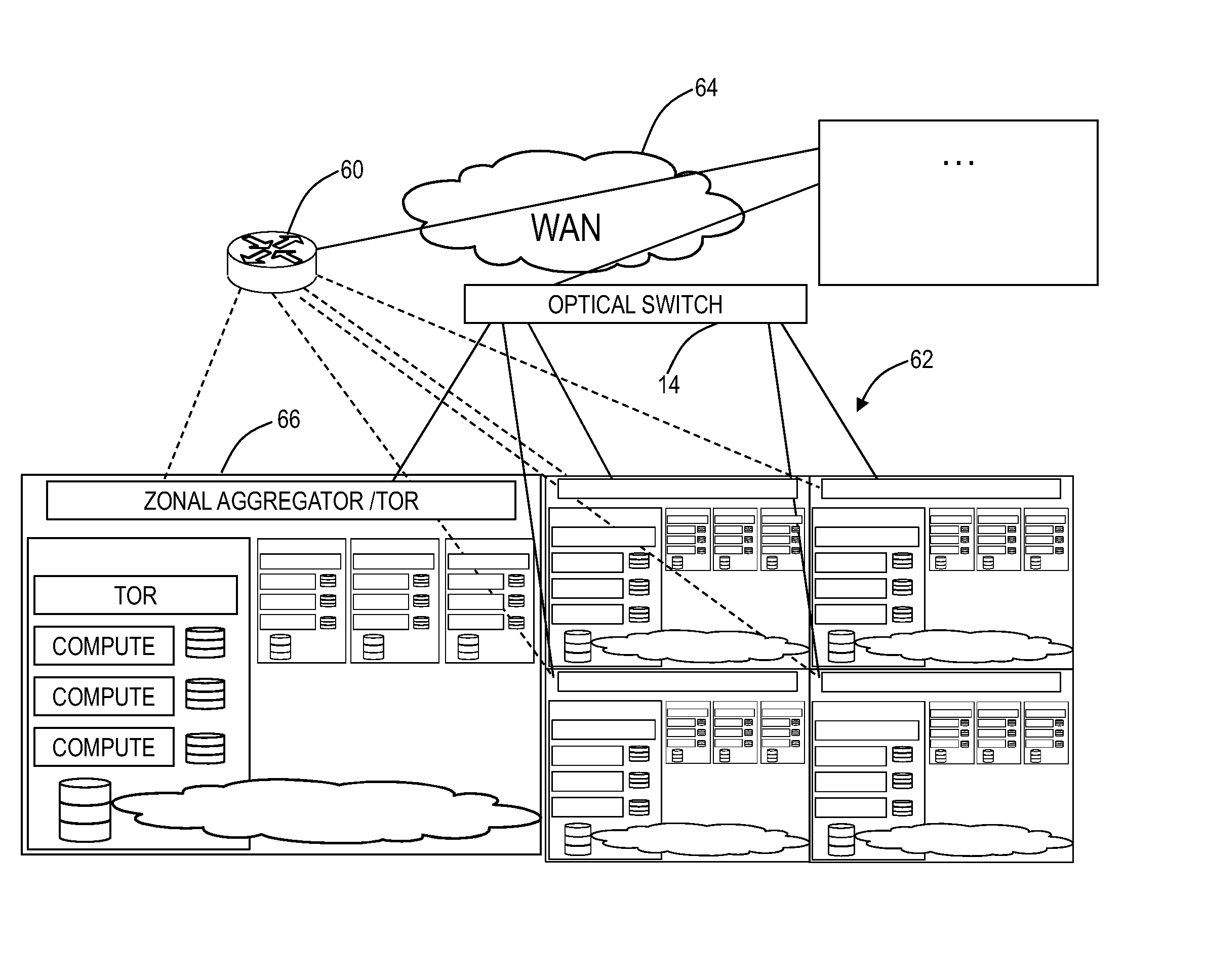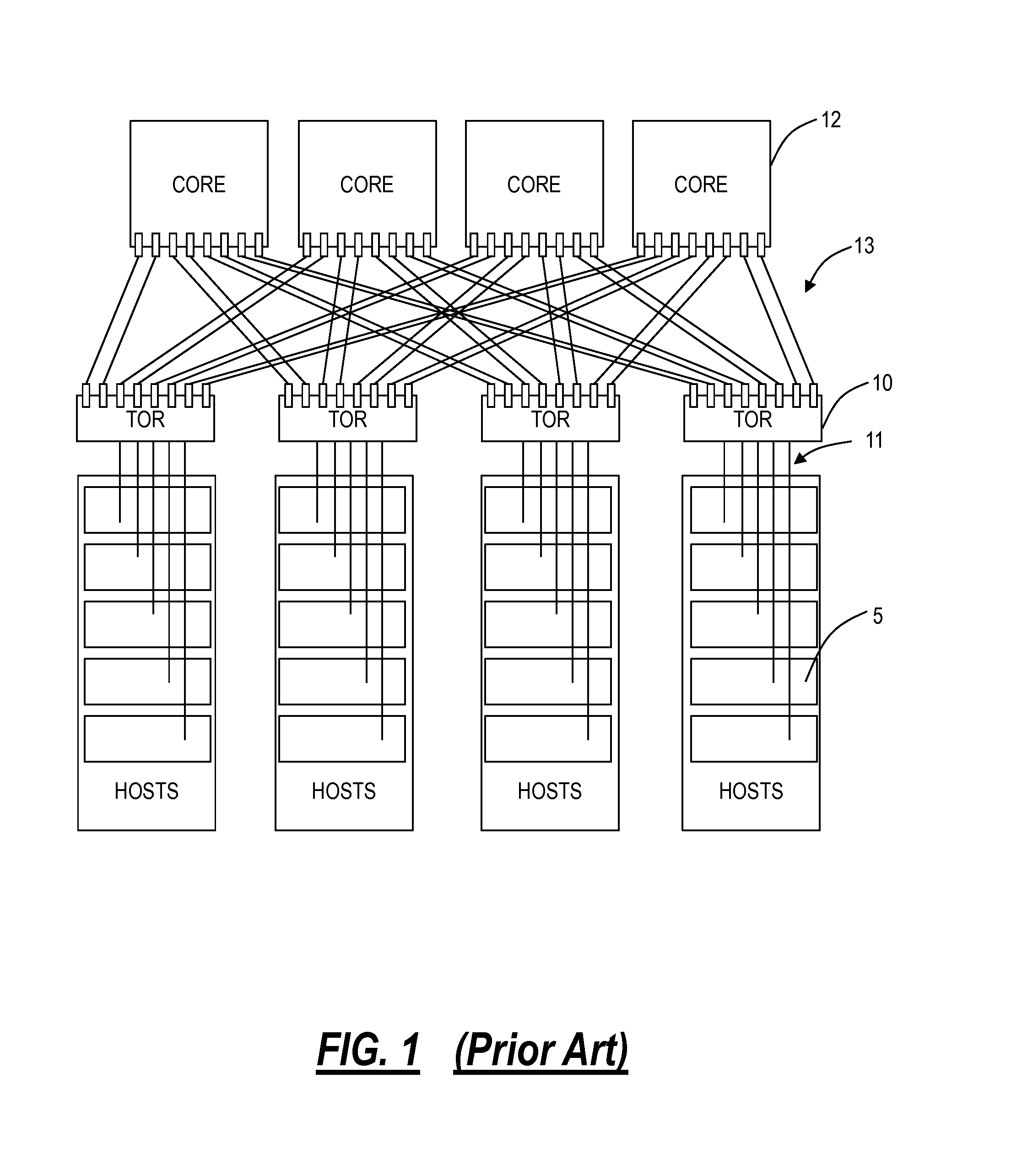Electro-optical switching fabric systems and methods
a switching fabric and optical technology, applied in the field of electrical switching fabric systems and methods, can solve the problems of multi-chassis routers and electrical switches, interconnect scaling problems, and increasing difficulty in providing adequate electrical switching capability to support all possible server-to-server communication patterns at full bandwidth across a large data center
- Summary
- Abstract
- Description
- Claims
- Application Information
AI Technical Summary
Benefits of technology
Problems solved by technology
Method used
Image
Examples
example 1
4 Rack TORs, 3 Waves, Full 1:1 Mesh (Excluding Loopback)
[0042]
c1c2c3c4 InpRow 1:1320 InpRow 2:0213 InpRow 3:2031 InpRow 4:3102OutRow 1:2103OutRow 2:3021OutRow 3:0312OutRow 4:1230
It is interesting to note that above configuration has 3 wavelengths for interconnecting 4 nodes (no loopback), but still requires 4 columns.
example 2
4 Rack TORs, 4 Waves, Full 1:1 Mesh (Excluding Loopback) with Demands 1-3 and 2-4 at 2 Waves
[0043]
c1c2c3c4 InpRow 1:2341 InpRow 2:4132 InpRow 3:3214 InpRow 4:1423OutRow 1:3412OutRow 2:1243OutRow 3:4321OutRow 4:2134
example 3
6 Rack TORs, 6 Waves, Full 1:1 Mesh (Excluding Loopback)
[0044]
c1c2c3c4c5c6InpRow 1:125430InpRow 2:631240InpRow 3:514603InpRow 4:346510InpRow 5:253160InpRow 6:062351OutRow 1:642103OutRow 2:563410OutRow 3:056231OutRow 4:215340OutRow 5:321650OutRow 6:134560
[0045]Thus a matrix of controllable switches on the horizontal waveguides serves to simultaneously demux input wavelengths and rearrangeably mux them onto vertical waveguides, achieving a fully non-blocking interconnect. The specific association of the data flow with a wavelength can be achieved using wavelength tunable transceivers. However, this is generally optically complex and expensive. A preferred method is to provide this association at the electrical layer in the TOR, keeping optical wavelengths fixed. This allows arbitrary cross-connectivity of wavelengths and achieves the goals of:
1. Support for a large number of wavelengths (at least 40, preferably 128 or more);
2. Support for a large number of rack interconnects (at least...
PUM
 Login to View More
Login to View More Abstract
Description
Claims
Application Information
 Login to View More
Login to View More - R&D
- Intellectual Property
- Life Sciences
- Materials
- Tech Scout
- Unparalleled Data Quality
- Higher Quality Content
- 60% Fewer Hallucinations
Browse by: Latest US Patents, China's latest patents, Technical Efficacy Thesaurus, Application Domain, Technology Topic, Popular Technical Reports.
© 2025 PatSnap. All rights reserved.Legal|Privacy policy|Modern Slavery Act Transparency Statement|Sitemap|About US| Contact US: help@patsnap.com



